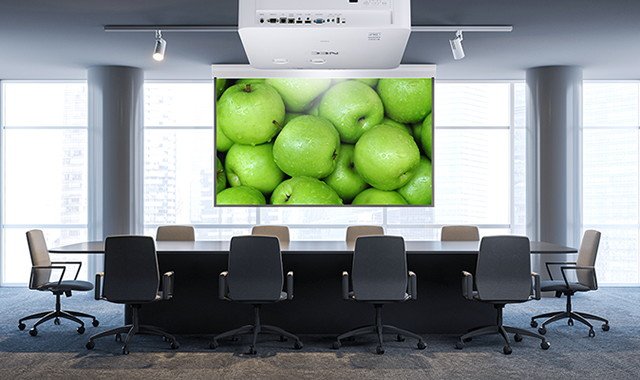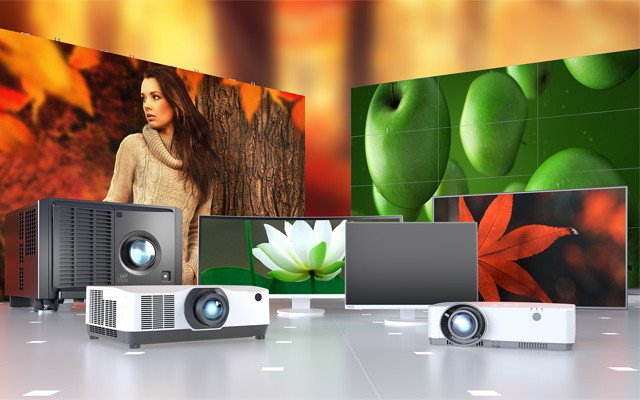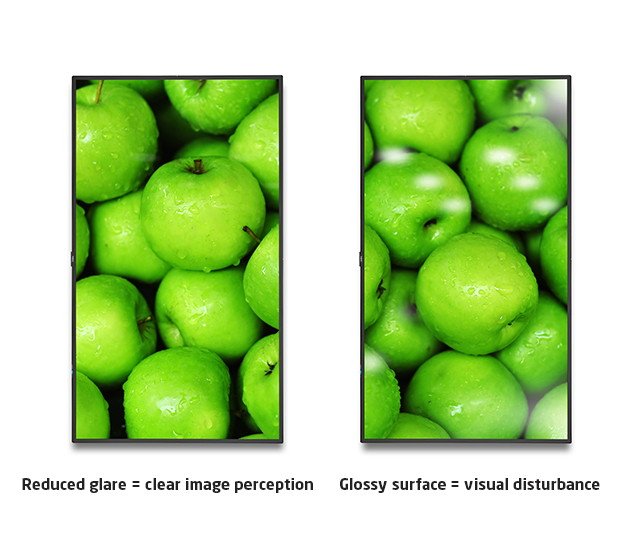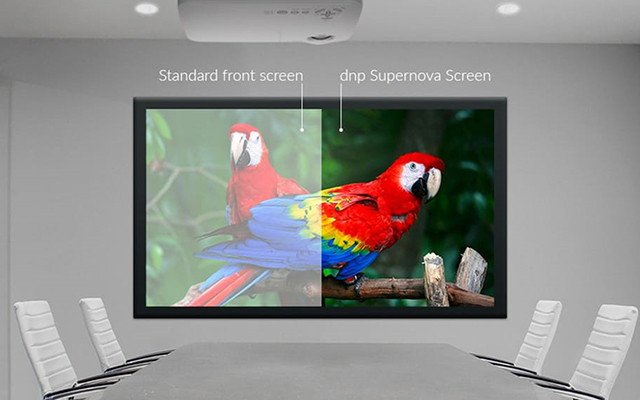Apples to apples: how to compare image quality across display technologies to deliver the best user experience
It’s not the projector you look at, it’s the projected image. The quality of that image is directly impacted by the quality of the projection surface.
Likewise, LCD large format display screens can be impacted by annoying reflections which can impede readability.
Find out how to optimise your display technology in order to deliver the best user experience.

It’s all about the user experience
Creating an exceptional user experience (or UX to be on trend!) is at the heart of Sharp/NEC’s customer-first approach. It’s about understanding user need and delivering a solution which directly meets that need. A case in point is Sharp/NEC’s innovation in super silent projection, you can read more about that here.
When specifying the perfect-fit technology to deliver the best user experience, you need to be able to compare like for like across specifications.
A projector for instance measures brightness in Lumens, an LCD screen in Candela, a dvLED in lux or NITs . . . what does all this actually mean? To the customer, its can mean very little, what does that mean in a comparable sense?
Recent innovation in laser projectors enable them to deliver 20,000 hours of maintenance free operation, meaning they offer a viable alternative to large format flat panel displays.
For larger images of 90” plus, they are also the most cost effective.
You can’t directly compare a projector with an LCD screen, however. The customer doesn’t look at the projector, he looks at the projected image. It is the delivered image that must be compared and there are many factors influencing how the image is perceived by the viewer. It is only by understanding the unique requirements of the application that we can design and deliver exceptional experiences for the user.
The Sharp/NEC Advantage
So how do we go about making sure our customers get the solution they need? There are a lot of complex variables involved, all determined by what the customer is wanting to achieve within a certain setting . . . viewing distance, number of meeting participants, ambient brightness etc.

Getting the right screen size is essential. A screen that’s too small for user requirements will not be viewable from everywhere in the room, with social distancing an additional factor to take into account. The AVIXA DISCAS standard is used to precisely determine the ideal image size, but as a simple rule of thumb, use the 6:1 rule (the screen height should measure at least ⅙ of the distance of the farthest viewer).
The required image size will help to determine the best display type and here lies the Sharp/NEC advantage.
Sharp/NEC can offer recommendations based on what is best for the customer application and environment; because we supply ALL of the major display technologies: LCD, dvLED and projection, we can be entirely agnostic in our recommendation. Our customers can be confident that they will receive the best-fit solution to their unique application requirements.
Specifying a system
When Sharp/NEC recommends the perfect-fit technology, we’re not simply specifying a product, we’re specifying a system. Any system is only as good as its weakest link. This includes the environment within which the delivered image is viewed, impacted by the lighting conditions and the image surface.

An LCD flat panel system
In the case of flat panel display screens, their reflectivity, coupled with direct lighting sources, can create terrible viewing experiences for some viewers in a room when the next person’s experience can be just fine.
When specifying an LCD large format display, it is vital to take into account the lighting conditions. Reducing the surface reflection in addition to a sufficient brightness level cannot be underestimated in its importance when delivering best user experience.
Professional Sharp/NEC displays feature an advanced anti-reflection haze filter. The anti-glare surface treatment reduces reflection from lights or windows to a minimum and achieves advanced visual conditions even in the brightest environment.
In all sizes up to 98inch, there is a size and feature set to match so many usage scenarios.
Browse full range of LFD products
A projection system
The quality of a projected image will be impacted by the quality of the surface upon which it is projected – at its most basic, a wall. No matter how powerful the projector is, when projecting onto a wall or low-quality screen, the image quality will be poor. When specifying a projection solution, it is vital to include a high-quality projection surface to generate the best possible viewing experience.

Professional-grade projection screens made from specialist materials, such as dnp Supernova optical screens, are designed to reflect light evenly and without distortion, resulting in high-contrast, detailed images with accurate colour rendition, even in challenging lighting environments. dnp Supernova true ALR optical screens provide up to 7x the image contrast of conventional projection screens for outstanding image quality.
As the projection screen becomes a key component in the projection technology, the projected image can be scaled to the exact size needed - and in any format or shape. It’s a highly versatile technology!
Browse the full range of projectors
Comparing apples to apples
With all attention now on the delivered image, optimised to show the display technology to its very best advantage, other factors come into play to determine the choice between LCD large format display, projection, or even dvLED.
Only now can the viewer compare apples to apples. The ideal apple (or delivered image!) will be determined based on the needs of the application and will consider required resolution, brightness, contrast, viewing angles, infrastructure, usage, and budget!
Use the Sharp/NEC Meeting Room Advisor tool to suggest the most suitable image size for different meeting and conference room applications.
We partner with Visual Displays Ltd, best known for their ALR (ambient light rejecting) screens, designed to be used in daylight and brightly lit environments.
Find out more about pioneering dnp Supernova ALR technologies from VDL.
